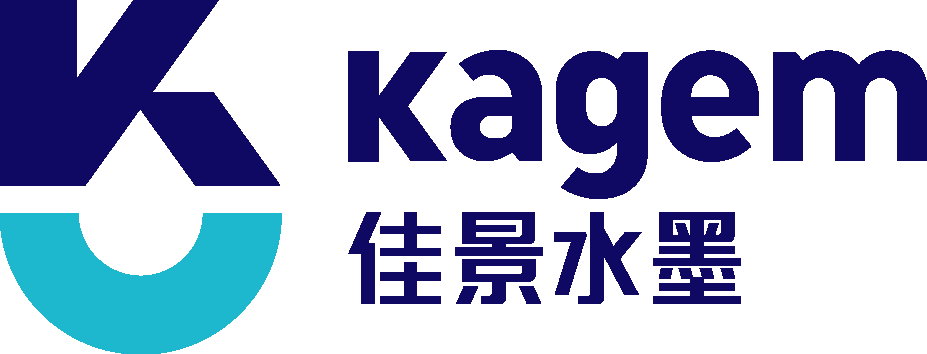
Home About Us Core Strength News Products Case Services Contact Us
Publisher:Kagem Number of visits:353
There have been various problems in the domestic flexographic printing industry. For example, when a certain printed product of the same terminal customer is handed over to different printing factories for processing and production, because different printing factories use different printing machines, different The ink and other factors cause the printing manufacturers to print the same product. When they pursue the same effect, they often need a plate making factory. The ink factory cooperates with the printing factory, which consumes a lot of manpower, material resources, financial resources, and how many proofs can be realized. For example, in the process of printing a certain product, the printing factory, the printing factory, and the ink factory are pushing each other in order to fail to achieve an effect. For example, in the case of offset printing, gravure and flexo printing, the color effect cannot be followed, and the version of the factory is required to be revised. Another example is that such a problem will undoubtedly greatly reduce the production efficiency of flexographic printing and increase the cost of flexographic printing.
Now we apply the French Color Source standardization verification software to match the ink to establish a printing standardization process for the printer to provide a complete solution to the above problems.
Below I will briefly introduce standard printing and its implementation steps by combining our standardized printing data for a label printer:
1. Standardization must first have standards and be goal-oriented. Our goals can be selected or customized according to the requirements of the customer or the product itself.
In general, we will follow the main printing industry standards that can be easily downloaded from the Internet, all ICC color profiles have been produced and published; of course, this standard can be customized, especially for some large printing groups based on their own The main products, paper, ink and other conditions are custom-made to suit the common standards of the various printing houses within the group. Customized standards can be used not only for the internal specifications of large printing groups, but also for problems caused by different printing machines and different inks when the same brand of products is sent to a number of printing houses.

The example uses ISO12657 FOGRA39 offset standard
2. Print the standardized printing test strips as shown in the following figure according to the existing conditions, and apply the XRite EyeOne spectrodensitometer metric chart to obtain the existing ink LAB parameters and printing dot expansion;

3. Import the measured data into the French color source - ColorSource CMYK field software, you can get the comparison between the current print data and the selected standard data (as shown below) to guide us to adjust the specification ink:

1) Comparison of the currently measured printed color gamut (Measured SB) with the target color gamut (Target Self-Backing) under current printing conditions;
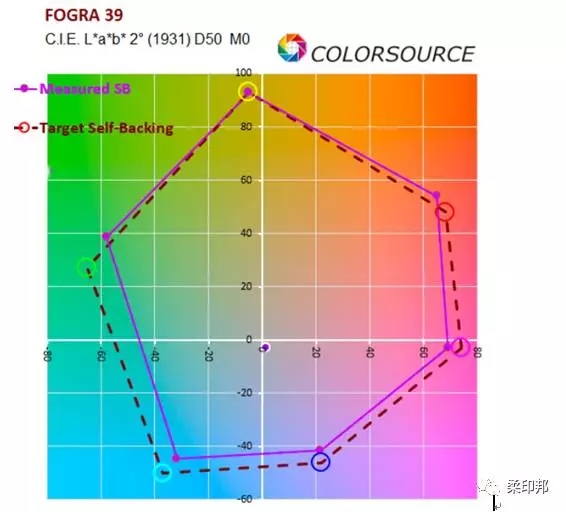
2) The current measured four primary colors of the ink concentration, LAB value (Measured 100% densities) and the target value data (Optimal print densities) comparison; (current blue color in the four primary colors need to adjust the ink concentration, from the current ink concentration 1.1 increased to 1.25 to reduce chromatic aberration to the standard range)

3) Data comparison of RGB and each color of different gray scales; (Because of the influence of blue color, the green color of the printed blue-yellow stack will not meet the standard requirements, as shown in the red green underline in the green image below)

4, according to the above data comparison, can guide us to complete the specification of the ink.
Due to the difference in paper white (substrate), CMYK Lab values may vary. According to the previous comparison data, the software can guide the operator to adjust the ink concentration and printing conditions (pressure, anilox roll configuration). The best Lab value (the smaller the ΔE value, the better the color difference YMC of the flexo ink (ink ink, UV ink) and the offset target value is 0.5-2, K is 2-3.5). Make the hue of the ink as close as possible to the hue range of the standard ink.
5. After adjusting the inkfield LAB value, the second step is to print a standardized printing test strip, and import the measured data into the French color source-Color Source curve creation brush software to obtain the current printing expansion data. (As shown below)
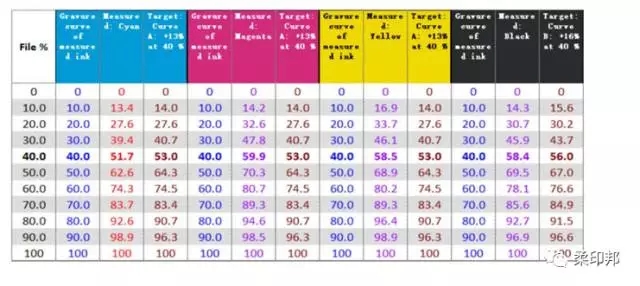
And contrast curve: (red is the current measured print expansion curve, and the deep red dotted line is the expansion target curve)
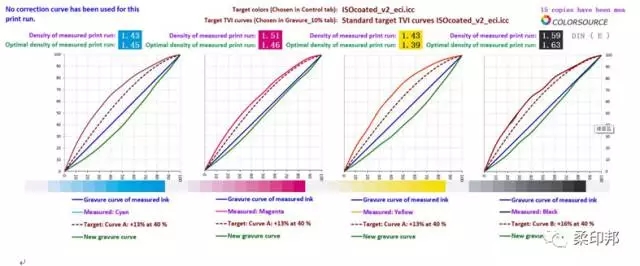
According to the data table expanded by the Internet point, we can know the measured dot expansion of each color (Measured) and the target curve (Target Curve). According to the above data, we can adjust the actual size of the printing plate. The print expansion data is close to the target expansion data.
6. Finally, after standardizing the ink and printing dot expansion, print a corresponding standard control strip (here ISO12647/FOGRA39 offset standard), use the X Rite EyeOne spectrodensitometer, scan the standard control strip, and import the data into French color. Source - Color Source printing and digital proofing quality verification software to verify that the printing meets the standards.

Offset standard (ISO12647/FOGRA 39) control strip
Import measurement data to detect the current printing situation: (as shown in the figure below) The software compares and analyzes the currently measured data according to the selected standard, mainly paper white, ink, dot expansion, etc., giving the printing whether it meets the selected standard. And comprehensively give the data of various main parameters (paper white, oil, dot expansion, etc.).
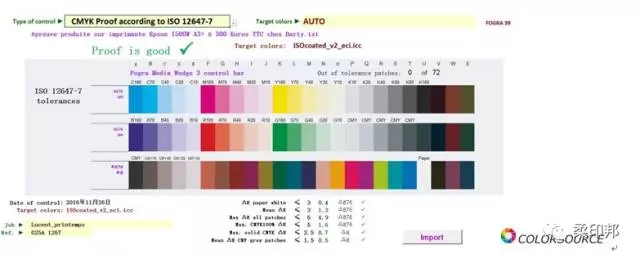
After printing standardization, in normal normal printing, we can add a simple chart as shown below (the color blocks in the chart can be used to break up the empty space), and the chart is scanned using the X Rite EyeOne spectrodensitometer. Import data into French color source - ColorSource printing and digital proofing quality verification software to see if the pressure during printing is too large or too small, monitor CMYK density, whether the field LAB value meets the standard, overprint quality and dot condition, etc. Thereby detecting whether the printed matter meets the printing target and achieves the standardization goal. Make the flexographic printing process a modern printing process that can be measured by data.
So the flexo standardization process is divided into four steps:
First, standardize the linearity of the printing plate (the normal action before the plate making, according to the different plate and plate making mode, make the linear compensation curve of the plate to ensure that the highlights are not dropped and the dark spots are not paste)
Second, standardize the hue of the ink (YMCK field LAB value)
Third, standard printing outlet expansion
Fourth, standardized verification
Standardized printing has achieved specifications for ink and plate dot expansion. The following figure shows the standardized printing effect of a certain label printing (standardization target is offset ISO12647/FOGRA 39): flexographic printing not only easily achieves the offset printing effect And achieve digital pre-proofing;
1. Gray balance comparison (from left to right: digital draft, flexo printing, offset printing)
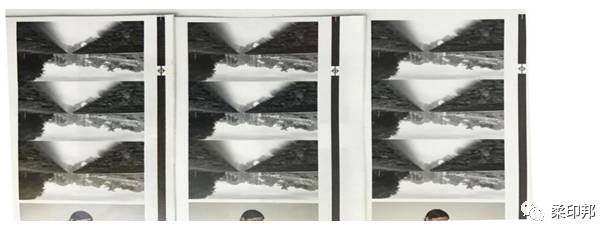
2. The following picture shows (from bottom to top) digital draft, flexographic printing (150LPI), offset printing:

Flexographic printing standardization can not only improve the production efficiency, control quality and cost of printing, but also enable the printing process to measure data, monitor data, and realize data production management. In short, today's packaging and printing industry, along with science and technology Continuous improvement, unprecedented unprecedented development, the promotion of digital printing, it is bound to require continuous innovation and development in the flexographic printing industry, the implementation of measurable standard printing, improve production efficiency, save costs in printing, improve flexographic printing Competitiveness is an imperative trend.
This article is reproduced in the "Soft Printing State" WeChat public number. If there is any infringement, please contact us to delete.

Guangdong Jiajing Technology Co., Ltd. (hereinafter referred to as Kagem), founded in 1999, specializes in the R&D, production and sales of water-based inks, water-based varnishes, water-based acrylic resins, water-based acrylic emulsions, pearlescent binders and other eco-friendly water-based printing materials.
Add: Shibu Industrial Zone, Liaobu Town,Dongguan, Guangdong 523000 CHINA
Main Line:0086-769-82318231
Fax:0086-769-82318555
Sales:0086-769-82318668
Fax:0086-769-82311109
E-mail:sales@kagem.net